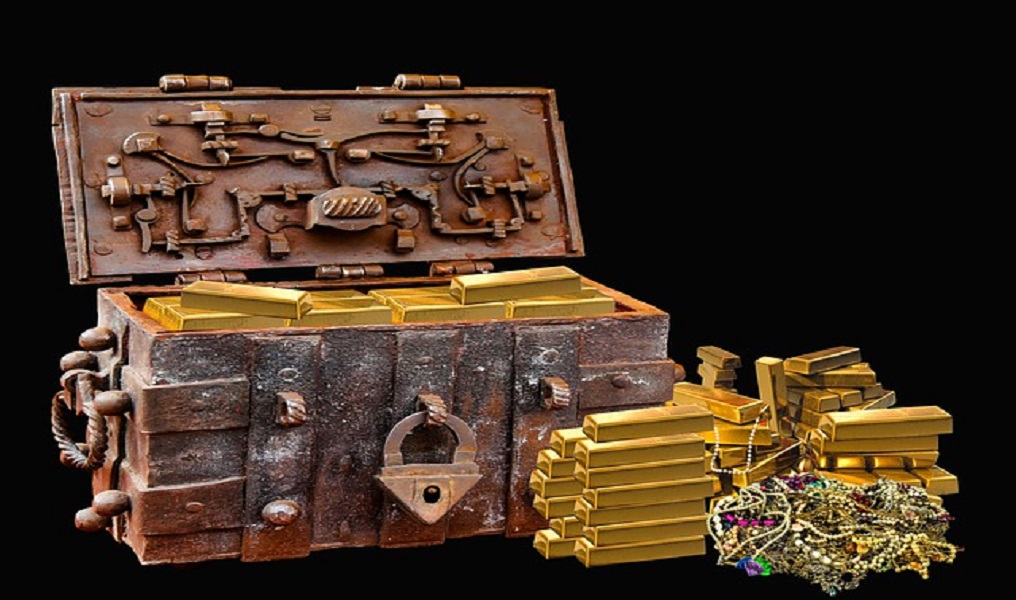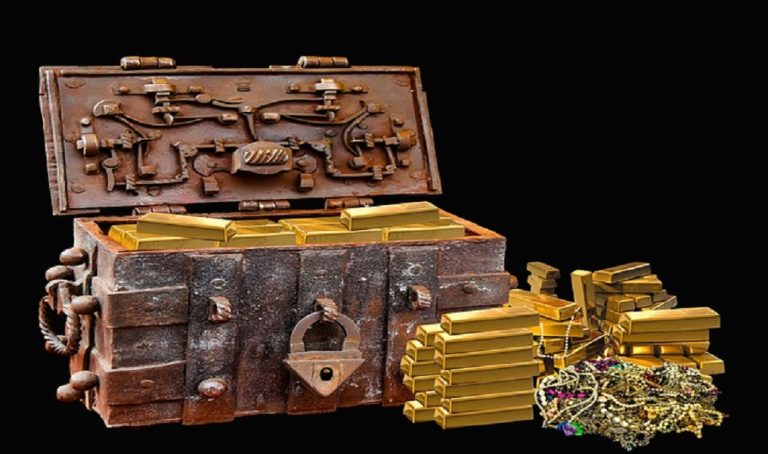Suppose you are an investor concerned about economic inflation, market volatility, and the preservation of your assets. In that case, there are several strategies to consider for diversifying your investment portfolio and mitigating potential risks.
As an owner of an individual retirement account (IRA), you may want to consider the benefits of investing in a precious metals IRA. This type of investment can offer physical asset backing, potentially providing stability and growth in the face of market fluctuations.
The process may seem overwhelming if you are new to investing in precious metals. However, with the right information and guidance, investing in a precious metals IRA can be a valuable addition to your investment portfolio.
In this context, we aim to provide a comprehensive overview of precious metals IRAs, including the approved metal types for investment. Additionally, we will guide how to get started with this type of investment.
What Is a Precious Metals IRA?
An individual retirement account (IRA) that specializes in precious metals is known as a self-directed IRA, allowing Gold IRA investors to take advantage of alternative investments such as:
- Real estate
- Bonds
- Private gold IRA companies
- Shine with the brilliance of precious metals such as Gold, silver, platinum, and palladium.
As an investment professionals, we highly recommend that individuals consider diversifying their portfolio with precious metals IRAs.
This can be achieved by opening a new account or rolling over existing retirement accounts, such as 401(k)s. Investing in precious metals, such as Gold, is a sound strategy that is not dependent on economic cycles or the value of the US dollar.
A Precious Metals IRA offers a means of safeguarding one’s future against the potential risks associated with a weakening currency. Therefore, it is advisable to consider incorporating precious metals, including Gold, into one’s investment portfolio.
Gold is a particularly popular choice among precious metals due to its unique properties, such as its non-corrosive and malleable nature and conductivity, making it highly sought after for various applications, including electronics and jewelry-making.
The demand for Gold typically increases daily prices over time – so why not consider other types of valuable metals like silver or platinum? All are worthy investments that will provide a great return on investment!
Silver
Silver, with its exceptional ability to conduct heat and electricity, is an indispensable material in industrial applications. It is utilized in various everyday items, including computers, cell phones, televisions, car parts, and solar panels. Given its exceptional conductivity, Silver cannot be substituted with more affordable metals.
Platinum
Platinum, on the other hand, is a rarer metal compared to Gold and Silver and is accordingly more expensive. It is primarily used in automobile applications, specifically catalytic converters, to reduce harmful emissions.
In addition, Platinum has other uses, such as jewelry refining and computer processes. Despite its higher cost, Platinum continues to demonstrate its value with a comprehensive list of benefits.
Palladium
Lastly, Palladium is a precious metal even rarer than Platinum and Gold. It has several industrial applications, including automobile manufacturing, electronics, dentistry, and fuel cell production. Like Platinum, Palladium is predominantly utilized in automotive catalytic converters.
In conclusion, working with a reputable Gold IRA company is important to ensure a successful investment experience in the precious metals market.
Benefits of Investing in Precious Metals
As a professional and expert in the field of investment, it is important to consider the following four key benefits when making decisions regarding a precious metals IRA.
1) Diversification Beyond Conventional Investment Vehicles
Diversification is a critical factor in a successful investment strategy. While stocks and bonds have been traditional investment options, a well-diversified portfolio can offer increased potential profits and reduced risks. It is advisable to consider alternative investment options, such as a precious metals IRA to maximize returns.
Traditional assets such as stocks, bonds, and mutual funds may experience significant losses in market volatility. On the other hand, precious metals have a history of holding their value during economic uncertainty and can effectively hedge against potential losses.
2) Increased Control Over the Investment Portfolio
For those seeking greater control over their investment portfolio, a self-directed precious metals IRA may be the ideal solution. Unlike traditional IRA options, such as 401(k) plans, limited by employer sponsorship, a precious metals IRA provides access to a wider range of investment options.
Additionally, precious metals offer flexibility in asset transfer and investment management. Assets within a precious metals IRA can be easily and sometimes tax-freely transferred to other retirement accounts or reallocated to stocks or bonds as part of a strategic shift in investment strategy.
3) Potential for Superior Returns
As a professional and expert in the field of investment, it is important to consider the historical performance of various asset classes. Gold, as a precious metal, has demonstrated exceptional growth over the past two decades, emerging as a leading performer in comparison to traditional investment options such as stocks and bonds.
Additionally, unlike conventional investment vehicles, a precious metals IRA typically involves fewer fees, offering greater potential for long-term growth and increased returns.
4) Tax Incentives for Precious Metals IRA Accounts
Precious metals IRAs offer the same tax benefits as traditional IRA accounts, allowing for pre-tax contributions and tax-deferred growth. Furthermore, annual contributions to a precious metals IRA may be tax-deductible.
In addition, transferring existing retirement assets into a precious metals IRA may be executed without incurring additional taxes, offering further tax advantages.
How to Start a Precious Metals IRA
As a professional and expert in the field of investment, it is my pleasure to guide you through establishing a precious metals IRA. To ensure the success of your investment, it is essential to seek the advice of experts and comply with all relevant regulations and guidelines.
1) Choose Your IRA Plan
Establishing a self-directed IRA is necessary to initiate an investment in precious metals. This can be achieved by creating a new account or rolling an existing retirement plan.
Before making any decisions, it is advisable to consult with a tax advisor and professional expert to verify the eligibility of your current accounts for transfer or rollover into a precious metals IRA.
2) Select a Precious Metals Custodian
A custodian must safeguard gold IRA assets to comply with IRS regulations. Working with a team of professionals with expertise in precious metals investing can assist you in identifying a qualified custodian to ensure your self-directed IRA’s secure and proper establishment.
3) Identify Your Precious Metals
To invest in precious metals, it is important to ensure that they meet the requirements set forth by the IRS. A specialist in this field can guide the selection of appropriate gold and other precious metals for investment.
4) Purchase Precious Metals
After deciding on the precious metals to invest in, the next step is to purchase and engage a custodian’s services to secure the assets in a gold bullion depository.
Congratulations on familiarizing yourself with the primary steps of investing in Gold and other treasured metals! To maximize your investment, let’s dive into which precious metals are certified for purchase.
Which Products Are Approved for a Precious Metal IRA?
Investing in precious metals through an IRA can be a wise decision. It’s important to be informed about the regulations and requirements for such investments.
Your custodian and investment professionals can provide guidance, but having a basic understanding of the rules will help you make informed investment decisions.
By starting with knowledge and due diligence, you can ensure that your investments comply with relevant regulations.
Investing in IRS-Approved Gold Coins
When investing in gold, it’s crucial to understand the regulations specified in IRS Code Section 408(m)(3). As a professional investor, it is imperative to consider the following key elements:
The Required Level of Fineness for a Gold IRA is .995
Please note that not all collectible coins are eligible for investment in a Gold IRA. However, there may be exceptions outlined in the IRS code. Moreover, here is a compilation of some approved Gold coins to be placed in Gold IRAs:
- Gold American Eagle
- Gold Buffalo
- Gold Maple Leaf
- Gold Lucky Dragon
- Gold Australian Saltwater Crocodiles
- Royal Mint Gold Lunar Series Coins
Before retirement, it is the responsibility of your custodian to store your precious metals investments securely. Upon reaching retirement age, you may take distributions as desired.
According to IRS regulations, storing precious metals at personal residences is not recommended. Working with a reputable IRA provider can ensure compliance with all relevant IRS rules and guidelines.
Please note that not all gold or silver coins, including those purchased for investment or collectible purposes, are eligible for inclusion in a Gold IRA. Regrettably, adding previously owned gold to an existing IRA account is impossible.
However, you can establish a new Gold IRA, where you may purchase approved precious metals within the limitations of the individual retirement account (IRA) contribution limit.
Additional IRA-Approved Precious Metals
If you’re looking for a sound investment, consider investing in other types of precious metals that fulfil IRS standards. The three top choices when investing in precious metals are silver, platinum, and palladium. To ensure your investment is of the highest quality, each metal must meet these minimum fineness standards:
- Silver– .999;
- Platinum;– .9995;
- Palladium– .9995
Precious Metals Price Growth
The history of freely traded gold on global markets is relatively recent. Despite having been a widely valued currency for centuries, gold was strongly regulated, and its price was determined by government intervention until the turn of the 20th century.
In 1900, the United States abandoned silver-backed currency, freeing gold from government influence and enabling it to be traded freely for the first time. At that time, all US dollars were backed by gold, valued at $20.67 per troy ounce.
However, President Franklin Roosevelt’s decision to nationalize gold and prohibit private ownership led to a decrease in the dollar’s worth, with each troy ounce valued at only $35.
The official exchange rate for gold remained at $35 per ounce until President Nixon ended the dollar-gold correlation in August 1971. Despite this, global gold traders had already begun exploiting arbitrage opportunities.
The London Gold Pool was created in the 1960s to maintain the $35 per ounce price, but its collapse in 1971 led to a surge in gold prices. Since then, gold has consistently outperformed both the Dow Jones Industrial Average and S&P 500, growing at an average rate of 8% annually.
In the 21st century, gold has experienced significant growth, outpacing stock market indexes. Given the current economic uncertainty and concerns about future economic stability, it is expected that gold will continue to perform well.
Best Practices for Selecting Gold
Investing in precious metals such as gold requires careful consideration and informed decision-making. To maximize the benefits of your investment, it is advisable to adopt the following strategies:
Diversify Your Investments
Precious metals can provide stability to your portfolio and protect it against economic instability. While exchange-traded funds (ETFs) may appear convenient, it is important to note that they do not offer direct ownership of physical precious metals.
Instead, they allow investment in stocks partially backed by physical gold or other precious materials. Ensure that you maintain a diverse portfolio to mitigate risks and enhance the stability of your investments.
Ensure precious metals are IRS-approved
As an investor seeking to diversify your portfolio with precious metals, it is crucial to ensure that your investments meet the requirements set forth by the Internal Revenue Service (IRS) for a Precious Metals IRA. The IRS sets contribution limits for these types of investments, so it is recommended to work with a reputable custodian and precious metals specialist to ensure compliance.
At Mynt, our team of experienced precious metals professionals can assist you in making informed investment decisions and ensuring that your investments are protected for the long term. To learn more about gold IRA rollovers and other precious metals investment opportunities, contact Mynt for expert guidance and support.


